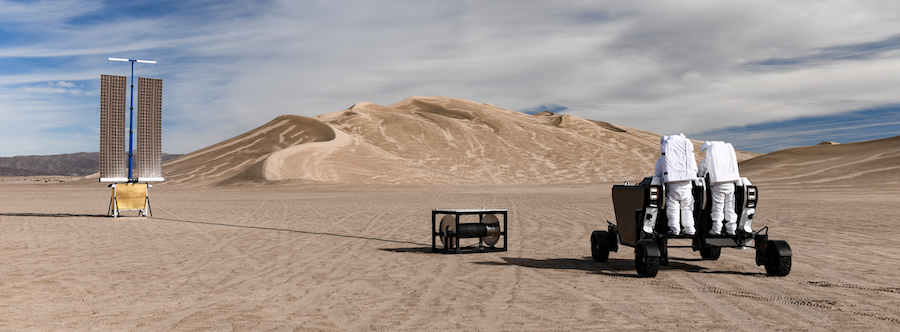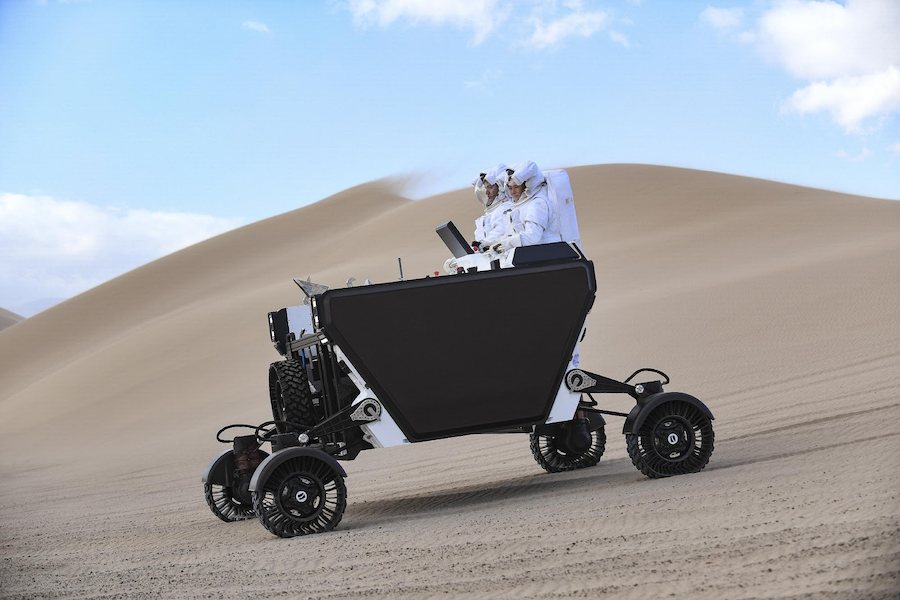Venturi Astrolab, a strategic partner of Monaco-based Venturi, has created a space vehicle called FLEX, designed for humans to comfortably explore the moon, Mars and beyond.
Venturi has made a name for itself crafting high-performance electric vehicles for Earth, but it’s also set its sights on the celestial.
Venturi Astrolab, based in California US, is applying its know-how to build a vehicle that can withstand the challenges of space. The new space rover, called Flexible Logistics and Exploration (FLEX), is currently being tested in the desert near Death Valley. This fully functional and full-scale prototype has been tested using both crewed and telerobotic operations using a variety of payloads in extreme terrain.
Even more incredible is the fact the vehicle is being designed for prolonged use in space with an eye to a time when people may live full-time on the moon or another planet.
“As we transition from the Apollo era, which was focused on pure exploration, to now, when people will be living for longer periods on the Moon, the equipment needs to change,” said Chris Hadfield, Astrolab Advisory Board Member, in a press -statement. “When we settle somewhere, we don’t just need to get people from one place to another, but we need to move hardware, cargo, life support equipment and more. And it’s all dependent on mobility. It was not only a joy to drive FLEX but also see its size, capability and get an intuitive sense of what this rover can do.”

Until now, rovers of this kind have been designated for specific uses and cost billions to design and build. This approach is clearly not cost-effective nor compatible with NASA’s end goal of supporting a sustained presence on the moon or Mars. The old rovers were one-time wonders.
FLEX, on the other hand, is being designed to go from lander to rover and back using a modular payload interface that supports intermodal transportation.
“For humanity to truly live and operate in a sustainable way off Earth, there needs to exist an efficient and economical transportation network all the way from the launch pad to the ultimate outpost,” said Jaret Matthews, Founder and CEO of Astrolab. “Currently, there is a gap in the last mile and Astrolab exists to fill it.”
FLEX’s commercial potential comes from its architecture, which gives it the ability to pick up and drop off modular payloads. This can be of use for robotic science, exploration, logistics, construction, resource utilisation, site preparation or virtually any other use that may come into play, as well as transporting two astronauts.
“We’ve designed a mobility platform that is payload agnostic so it can work within an ecosystem of transportation systems, vehicles and tools,” said Matthews. “FLEX achieves a wide range of utility by being able to collect, transport, and deposit any payload that conforms to what will be a standard and open interface.”
In June 2021, Venturi unveiled the world’s first ever zero emission polar exploration vehicle, which went into operation at the Belgian Princess Elisabeth research station in December.
Photo source: Venturi Astrolab
